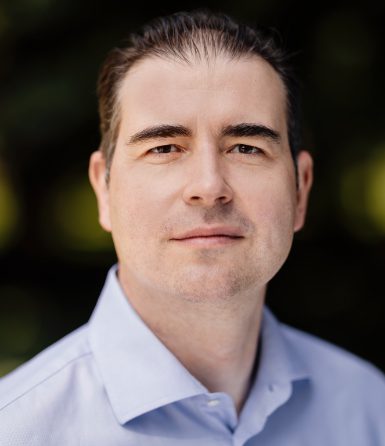This is the last article in our series about how data and AI might impact work and the stewards of work – HR.
Our first article found that workers, teams, and organizations are not operating at their full potential. The increasing complexities and uncertainties are even leading to a declining trend. There is a lot of wasted potential.
Our second article gave a sense of how significant the untapped potential might be and some clues about how to tap into it. Even without thinking about AI, we know work and workers have to change and upgrade, and data and AI should be universal ingredients that help drive this upgrade.
Our third article outlined AI’s disruptive impact on work beyond automation. We also see massive potential for human-machine collaboration and making work more human again. AI can be a liberating force for workers who embrace it.
A call for HR to lead
Humans and AIs will work alongside each other. However, the magnitude of what can be done with AIs will rapidly increase. AIs will leverage our combined knowledge and significantly improve their applicability. So, one key question is: What “human work” remains, and how do we design “future work” and “future organizations?”
There is a clear and loud call for HR functions to lead. We imagine the following roles for HR in the context of future work:
- Leading AI experimentation and learning to increase agency, advocacy, and adoption by extending the HR Toolkit with data and AI
- Leverage AI to make work more human again
- Ensure AI is ethical and trustworthy, including defining what that means
This workplace disruption is similar to the Industrial Revolution about 100 years ago, but will manifest faster and more globally. What does this mean for the HR function, as HR is the steward of work and workers?
Extending the HR Toolkit
Traditionally, HR has operated primarily through:
- Best practices and processes, as well as
- Knowledge and experience
In a world of accelerating change impacting every aspect of work and life, these approaches are too slow in their ability to adapt. We have to deal with
- Digital ubiquity via always-on mobile devices and the infodemic
- Work from home and anywhere in the world, and changing forms of the “workplace”
- A truly global job market, with workers from the global south becoming highly competitive and globally available
- Rapidly changing requirements in skills and competencies
- Many generations with fundamentally different preferences and work styles
- A deeply connected world that is increasingly unpredictable and unreliable, including geopolitical, financial, and migrational distortions
- And more
To understand these futures, we can no longer rely mainly on strategies from the past but need to understand the present and future via evidence-based feedback-enabled decision-making, advanced prediction models, and AI. The natural response is to extend the HR Toolkit systematically using a data—and AI-based approach.

Figure 1: Extending the HR Toolkit
The emerging paradigms of Data and AI represent a hybrid human-machine operational model where:
- Humans provide strategic vision, empathy, and judgment
- Data and AI systems handle data processing, pattern recognition, and routine tasks
- The combination delivers outcomes more significant than either could achieve alone
The main ingredient is high-quality people data. Each organization sits on this treasure. However, the more advanced data usage is envisioned, the more datasets are required to unlock positive-sum data network effects. Therefore, we focus on how organizations can collaborate on their people data to master the challenges mentioned above collectively.
The Changing Face of HR
McKinsey’s research highlights that approximately two-thirds of HR tasks can be automated. This isn’t only about replacing humans with machines, but also about freeing HR capacities to focus on strategic activities that improve organizational effectiveness and shape “future work”.
According to McKinsey’s report “A new operating model for people management”, these future tasks would be evolving the HR function into a “strategic triumvirate” comprising:
- People strategists: Senior coaches who collaborate with business leaders to enhance organizational effectiveness
- People scientists: Subject matter experts who deploy data-driven insights to design effective interventions
- People technologists: Tech-savvy experts who build and maintain the data and technology infrastructure
Applying data and AI capabilities—which will disrupt all work—to HR work first, will lead to early insights and individual and organizational learnings that will help the strategic HR triumvirate master the transformation of the whole organization.
HR has repeatedly led technological innovations, with the first computers used for censuses, payrolls being the first outsourced services, and HR leading the cloud transformation of many enterprises.
For HR leaders navigating this complex landscape, several imperatives emerge:
- Redefine HR’s strategic role: Leading and stewarding the disruption of work by AI, including a positive vision for the workplace and making work more human again
- Develop HR data fluency: Understand leveraging data analytics and AI to drive decision-making within HR, based on people data
- Balance automation and augmentation: Identify which functions should be automated and which require human judgment and empathy
- Steward individual and organisational growth: Becoming a “scalable for learning” organization and encouraging each employee to embrace differences and change, incl. cultivating a growth mindset and a learning culture
- Build collaborative AI governance: Participate in cross-organizational initiatives to ensure AI systems serve broader organizational and social interests
AI – the Endgame of Cross-Organizational Collaboration and Governance
The need for cooperation and cross-organizational governance will increase as superhuman AIs become more prevalent. AIs shouldn’t be trained, controlled, and governed by a single organization; they should be club goods based on the foundational paradigms of privacy, fairness, and agency.
Based on our version of „future work, “ workers and employers are even more naturally aligned with the emergence of AI. So when we mention the HR function in this context, it naturally includes worker councils. However, big tech or other centralized powerhouses are natural enemies, harvesting their data, knowledge, and capabilities at an unseen scale, threatening any work—and knowledge-based business at its core.
Some data/knowledge is unique to individuals, some to organizations, some to communities, and some to professions. There are negative data externalities in play, leading to the situation that if one group member exposes data, even for a small gain, the whole group is damaged by that disclosure. Likewise, bargaining against intermediaries as an individual or enterprise is difficult without coordination. So each group or community needs to organize about data to keep control, bargain collectively, and overcome these dilemmas. And most importantly, everyone should be very reluctant to „sharing“ data in any circumstance.
Way Forward
At this technological inflection point, the choice isn’t between humans and machines, but between different AI development and control models. For HR leaders, the imperative is clear: embrace the shift to a hybrid human-machine operational model while ensuring that the resulting systems reflect and serve our collective interests.
This is a call to the HR function, incl. workers’ councils in our organizations and enterprises, and everybody in our society, to accelerate the advancement of social systems and cross-organisational (data) collaboration. Both can benefit from each other.
This is article four out of four published by Tapir. Here are the links to the previous three articles:
Article 1: Your Wasted People Potential on Three Different Levels
Article 2: 100× Your Work With Positive-Sum People Data Games
Article 3: Future Work in a World of AI and Algorithms
The articles build on each other. Thanks to the following people for their inspiration, collaboration, and feedback: Paul Goller, Andreas Krisor, Daniel Levi, Matt Prewitt, Jack Henderson, Malik Lakoubay, Martin Rausch, Jennifer Scurrell, Ferdinand Ferroli, Reinhard Zeitler, Leon Erichsen, Sheridan Johns, Trent McConaghy, Dominik Dellermann, Chris Boos, Frank Kuhnecke, E. Glen Weyl, Audrey Tang, and Erik Brynjolffson.
Sources
- McKinsey & Company. (2025, February). A new operating model for people management: More personal, more tech, more human.
Andreas Fauler
Business
What this is about
Discover how Post-Cognitive Equity, augmentation, and human-machine symbiosis define the future of work.Share Story!
Andreas Fauler
Business





